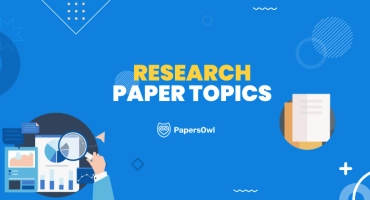Limitations of Research Study: Everything You Need to Know
Table of contents
Research for academic purposes is always challenging and requires much prep. This includes careful research design and an understanding of experiment limitations. Even though you have analyzed and prepared things, the results may still differ. If you’re facing difficulties, considering the research paper writer services can help ensure thorough research and proper handling of limitations, leading to more valid conclusions.
There are many reasons for this, and one of the main reasons is limitations in research. Unfortunately, a study can’t consider all options or circumstances at once. For example, you are studying how nutrition affects student performance. But you are not considering each student’s traits, routines, relationships, weather, age, and so on.
The study must include confounding factors in its conclusions and results, which can distort the final result. This article will help you understand the strengths and limitations of research and guide you on how to consider them. This is when you reach valid conclusions and plan future investigations.
Defining Limitations in Qualitative Research
What are limitations in research? Many factors confound the study, including its reliability, validity, and generalizability. These can limit the research problem. Internal limitations are constraints within the researcher’s control, including sample bias or method flaws. But external research limits come from factors like population or environmental factors. They are beyond the researcher’s control.
The limitations of research studies are significant in defining the scope of research inquiry. It outlines the results’ extent and meaning. It finds areas where the outcome might be less reliable or relevant.
Acknowledging and writing limits fosters honesty. It reminds researchers and readers of science’s complexity and uncertainties. Researchers can improve methods. They do this by understanding and fixing limitations in a research paper. It helps to interpret research findings more. This advances knowledge in their fields and literature review.
If you need help with writing a research paper, our writing service is ready to assist you.
Common Limitations of Research Studies
In general, there are four types of limitations in a research study:
| Methodological study limitations for research | Data collection study limitations |
| Resource study limitations | External validity study limitations |
Limitations may lead to potentially biased observational studies
Many things can become limitations in a dissertation. They affect the study’s reliability, internal and external validity, and generalizability. However, the research method impacts the whole study.
The dissertation has methodological limitations. These include problems in the study’s design and execution and constraints. Simple limitation examples: a small sample size can weaken statistical power. Flaws in prior research design can also hurt the study’s validity.
Collecting precise and complete data in the scientific literature is hard. These challenges are known as data collection limitations in research. The study’s limitations can come from measurement errors. These errors are caused by imperfect tools or human error. They lead to inaccuracies in the data. Also, response bias comes from participants’ tendency to answer in socially desirable ways. It can distort results and hurt the study’s credibility.
A study’s limited resources can be a big obstacle for research. For instance, time constraints may require shorter periods, which can curtail the breadth and depth of the study’s findings. When funds are limited, researchers may lack resources for good methods or thorough analyses. This further hinders research.
External validity limits research. It refers to how well a study’s conclusions apply to contexts beyond where it was conducted. Factors like the study population or setting have distinct characteristics. They can make extending the findings to other groups or places hard.
How to address limitations in research?
It is essential for researchers to be aware of common research limitations and to plan their research process. They need to know their topic and know the limitations in research examples. Identifying limits in their research paper helps researchers. It can cut flaws, improve data collection, and save resources. They can also judge how their findings apply. Acknowledging these limits can help researchers. It can increase the credibility and impact of their results. This fosters more confidence in their findings. It is in the scientific community and in future research. If you struggle with the limitation, ask for help with research paper.
Impact of Study Limitations on Research Outcomes: How to Find Limitations of a Study
Methodological limitations can compromise research results. These include small sample sizes and flawed research designs. These possible limitations of the study increase the likelihood of chance findings or bias. Similarly, limits on data collection cause inaccuracies. They come from things like response bias or measurement errors and can distort data. These problems harm the validity of the findings.
Unsolved limitations and a lack of research examples greatly affect how we interpret and use study results. Without mitigation, researchers risk drawing wrong conclusions and overgeneralizing findings. For instance, a scientific study may have limited external validity. Its findings may not represent the broader population or apply to different contexts, leading to misguided information in the existing literature or interventions.
Case studies provide valuable insights into the real-world effects of those examples of limitations of a study. For instance, a study may aim to test a new medication. But, it may face limits on resources. These limits could lead to a small sample size and low statistical power. As a result, the study may fail to detect the drug’s subtle, yet clinically significant effects. This could lead to wrong conclusions about its effectiveness. Presenting limitations and alternative approaches is part of the methods section and discussion.
Consider another scenario where a survey aims to investigate public opinion on a social issue. However, the research topic itself may lead to response bias, potentially creating limitations in a study. Ignoring such limits could lead to distorted findings. It would misrepresent the beliefs and attitudes of the surveyed people. This would damage the study’s credibility. So, admitting research’s limits is crucial. The impact of these limits on results is clear. It shows the importance of careful methods and clear reporting. Researchers can improve their findings’ trustworthiness.
They can do this by finding and fixing limitations. In doing so, they can ensure that their research contributes greatly to advancing knowledge. It also informs evidence-based decision-making in future research. If you need help, our specialists will gladly write my paper for me to ensure high quality.
Strategies for Addressing and Presenting Studies Limitations
We must acknowledge the limits of the research if we want to keep academic papers authentic and reliable. Below are a few tactics to accomplish this:
- Transparent Reporting: Researchers should openly acknowledge and describe limitations in their academic publications. Transparently reported findings let readers evaluate their credibility and accuracy, which promotes further investigations.
- Sensitivity analyses are essential in research writing. They examine the potential limitations of a study. By changing key parameters or assumptions, researchers can check the strength of their findings. They can also find any sources of bias or uncertainty.
- We recommend using various methods or data sources. This will improve the trust and accuracy of research conclusions. By using all the results, researchers can avoid relying on one method. This helps lessen the impact of method problems on study outcomes.
- Working with teams of people from different disciplines can beat resource limits. It also expands the toolkit available to researchers. By sharing expertise and resources across fields, researchers can do better research. They can also fix limitations.
- Considering alternatives will lessen the impact of limits on study conclusions. Researchers should carefully assess and analyze other explanations or interpretations of results. Considering other ideas is crucial. It ensures the findings are robust. They won’t depend only on specific methods or assumptions.
In the future, researchers can use strategies to find limits. They can then fix and cut them in qualitative research. This will ensure their findings are reliable, valid, and credible. It involves a clear understanding of limitations vs implications. Also, being clear about limitations in writing fosters trust. It makes the scientific community more confident. Researchers should communicate any limitations in the discussion section and research limitations section. So, the importance of limitations in research is hard to overestimate.
Limited Access to Outstanding Future Study
Accepting and addressing limits is not a sign of weakness. It is a testament to the difficulty and honesty of science. They can do this by reporting limits in past studies. They can also do this by doing sensitivity analyses and working with other fields. They should also consider alternative explanations. Over these efforts, we can create a culture of humility, transparency, and confidence. This will ensure that research findings add to our understanding. They will do so in a meaningful way. If the complexity of meeting these ethical and structural requirements is overwhelming, you can hire an expert to do my research paper for you. Embracing limits when you write becomes a pathway to better integrity and knowledge.







